As a teacher, sometimes you see something and immediately know that you want it for your classroom. It’s not a necessity, but you know it will make your job easier. Other times, you are out and about, run across something, and you know you need it! The ACTION DigitDrop pins were one of those needs. In my kindergarten classroom, teaching the difference between a want and a need is a year-long process, so I don’t use the terms interchangeably at all.
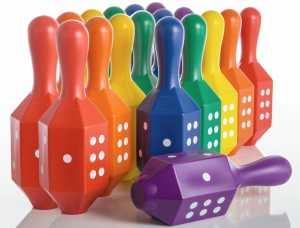 Of course, I didn’t buy the DigitDrop pins when I first saw them because I was at a conference and saw them in the Play with a Purpose booth in the exhibitor hall. But, I thought about them a lot after I got back to my classroom and without fail, at least once a week I would find myself thinking, “This would be so much cooler for my kids if I had those amazing dice pins!” This is what my wife calls “a consumer’s covet,” and it rang true because I really couldn’t get past how much I needed these DigitDrop pins in my classroom. So, I ordered my set and can’t believe that I taught so many years without them.
Of course, I didn’t buy the DigitDrop pins when I first saw them because I was at a conference and saw them in the Play with a Purpose booth in the exhibitor hall. But, I thought about them a lot after I got back to my classroom and without fail, at least once a week I would find myself thinking, “This would be so much cooler for my kids if I had those amazing dice pins!” This is what my wife calls “a consumer’s covet,” and it rang true because I really couldn’t get past how much I needed these DigitDrop pins in my classroom. So, I ordered my set and can’t believe that I taught so many years without them.
These pins are similar to bowling pins, but they aren’t round. They have six sides with dots on each side in a dice formation with numbers one to six. The uses for the DigitDrop pins are countless, but I want to share my favorite five ways that I’ve found for them.
Subitizing
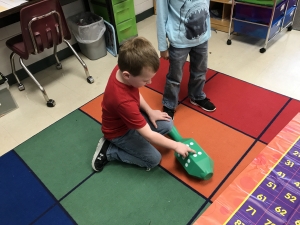
Several years ago, this word made its way into the vernacular of early elementary education. If you aren’t familiar with subitizing, it’s the ability to see a set of dots and immediately recognize that number without counting them. There are several popular videos on Youtube that try to teach this skill. I find having kids roll these pins and then counting the dots has really helped them in their ability to identify the main six sets of dot patterns. We ended up creating several games while practicing our subitizing skills. The first is that two students roll different color pins at the same time and the first to shout his/her number gets a point. Another quick game is where I call a number and the first one to roll it with wins. Both of these games have become favorites in my class, and both work on a math skill that is assessed multiple times through the year by my home district.
Counting to 100
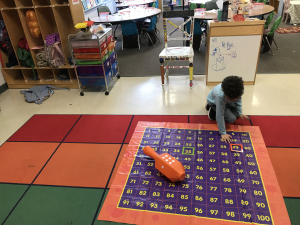 In my classroom, celebrating the 100th day of school is one of the biggest days of the year. We count up to the 100th day each year, and we celebrate it with stations that reinforce the skill of counting to 100. My DigitDrop pins were the perfect addition to my huge 100 board that I use each year. The “large” inflatable dice that came with the original board set had long been busted by some overly excited kindergartener who shall remain nameless. Well actually, if you teach kindergarten you could insert any of 100 names into that sentence! But, it’s totally fine and actually now, using these pins is even better than the inflatable dice ever thought about being. My board came with double-sided frames. One side is green, and the other side is orange, so it was super-convenient that the pins come in different colors including green and orange. Basically, each child rolled the pin and moved their frame that many spaces. By taking turns, they keep adding their way to 100 and the first student there wins! We also played this game in teams taking turns rolling their pin and moving their frames through the 100 board.
In my classroom, celebrating the 100th day of school is one of the biggest days of the year. We count up to the 100th day each year, and we celebrate it with stations that reinforce the skill of counting to 100. My DigitDrop pins were the perfect addition to my huge 100 board that I use each year. The “large” inflatable dice that came with the original board set had long been busted by some overly excited kindergartener who shall remain nameless. Well actually, if you teach kindergarten you could insert any of 100 names into that sentence! But, it’s totally fine and actually now, using these pins is even better than the inflatable dice ever thought about being. My board came with double-sided frames. One side is green, and the other side is orange, so it was super-convenient that the pins come in different colors including green and orange. Basically, each child rolled the pin and moved their frame that many spaces. By taking turns, they keep adding their way to 100 and the first student there wins! We also played this game in teams taking turns rolling their pin and moving their frames through the 100 board.
Formative Assessment
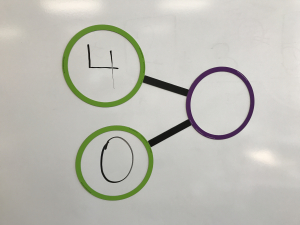 In my school district, like many school districts across the country, we use the Engage NY Math program. In Engage NY, we create number bonds. You take two numbers and write them in a visual way that the early learners see how they come together to make a larger number. I have used multiple math programs through the years. A number bond has many names, so you may call them Math Mountains or simply addition or subtraction fact families. At the end of my lessons, my students have a favorite formative assessment. That’s a weird sentence, right? “My students have a favorite formative assessment.” But it’s the truth.
In my school district, like many school districts across the country, we use the Engage NY Math program. In Engage NY, we create number bonds. You take two numbers and write them in a visual way that the early learners see how they come together to make a larger number. I have used multiple math programs through the years. A number bond has many names, so you may call them Math Mountains or simply addition or subtraction fact families. At the end of my lessons, my students have a favorite formative assessment. That’s a weird sentence, right? “My students have a favorite formative assessment.” But it’s the truth.
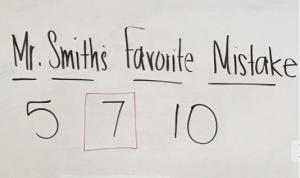
Turning Assessments into Games
We play a game called Mr. Smith’s Favorite Mistake. I give every student a small piece of paper, and I roll the DigitDrop pins and find my two numbers. I fill in two of the circles of our number bond with what I roll and then leave the third circle empty. Each student writes the number that they would put in the third circle on their paper, fold it, and I collect each piece of paper. I go through each paper and sort them into “correct answers” and “not quite right answers” piles. I then count the number of correct answers. When everyone in the class gets the answer correct the students earn a trip to my treasure box. If not everyone gets it correct, I write all the incorrect answers on the board. I then announce which mistake is my favorite and explain why it is my favorite. In the example above, I chose the number seven as my favorite mistake. I figured the student held up six fingers and then held up two fingers to add them together. Then, I guessed that when they held up the two fingers, they forgot that they needed one of those fingers to be part of their six. It was the perfect example of why our students need to move from using their fingers to count. We also play Mr. Smith’s Favorite Mistake as a way to assess our reading and writing skills. I have the students write the letter that makes the sound they were given on their slip of paper or by spelling a sight word that we learned.
Station Markers
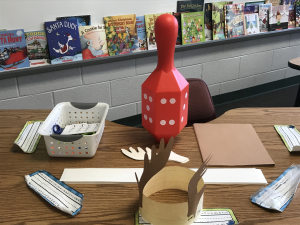 Setting up stations and having students rotate them can be tricky when students forget which direction we are going. There are tons of ways that the kids in our classrooms can show us the loopholes in our best-laid plans! I typically use colors to mark stations. In the past, I’ve used colored bulletin board paper table cloths or construction paper tents to mark the different stations. Both ways have worked well enough, but I started using these pins to mark the stations. The size and durability means students can see them clearly, and that I can use them every day! To help my kids transition from station to station, I use several different techniques. One is setting up two timers. The first timer is set to go off to announce that there are only four minutes left. The next timer is the two-minute warning. So, when the class hears the timer, they know to start cleaning up. It also helps when I tell the class to “switch”, everyone is ready and the transition goes smoothly. The other great thing about the DigitDrop pins is that you can use the pins to show station numbers. This is achieved by laying the pins down so that the number of the station is facing up. The kids love the large pop of color that is ever present in our classroom now!
Setting up stations and having students rotate them can be tricky when students forget which direction we are going. There are tons of ways that the kids in our classrooms can show us the loopholes in our best-laid plans! I typically use colors to mark stations. In the past, I’ve used colored bulletin board paper table cloths or construction paper tents to mark the different stations. Both ways have worked well enough, but I started using these pins to mark the stations. The size and durability means students can see them clearly, and that I can use them every day! To help my kids transition from station to station, I use several different techniques. One is setting up two timers. The first timer is set to go off to announce that there are only four minutes left. The next timer is the two-minute warning. So, when the class hears the timer, they know to start cleaning up. It also helps when I tell the class to “switch”, everyone is ready and the transition goes smoothly. The other great thing about the DigitDrop pins is that you can use the pins to show station numbers. This is achieved by laying the pins down so that the number of the station is facing up. The kids love the large pop of color that is ever present in our classroom now!
Other Math Games
The list of games that can be played with these pins is endless. At the first of the year, I love doing a whole week based on the classic book Chicka, Chicka, Boom Boom and playing Coconut Bowling is always the highlight. I cannot even begin to express how excited I am for next year when I have these pins for our Coconut Bowling activity. The pins also came in super handy when the class began learning about more and less earlier in the year. I have two kids come up and each roll a pin and then have them determine which number is more and which number is less.
There are so many uses for the DigitDrop pins. These five ideas aren’t even the tip of the iceberg of uses for these amazing pieces of educational materials. Even if you don’t feel like you are the creative type, don’t worry! Your students will give you tons of ways to use these pins. They will try to get you to incorporate them into every lesson you do! If you need to have your kids write for a set number of minutes, roll a pin and let it determine how long they write by adding the number rolled to 10 (i.e. a 1 means you write for 11 minutes) or turn the number of pages that they need to read with the roll of a pin. I genuinely love mine! I would love for you to leave comments below with other ideas on how to use them.
Interested in ACTION! DigitDrop? Check them out!

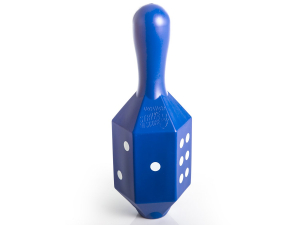



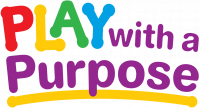

Leave A Comment